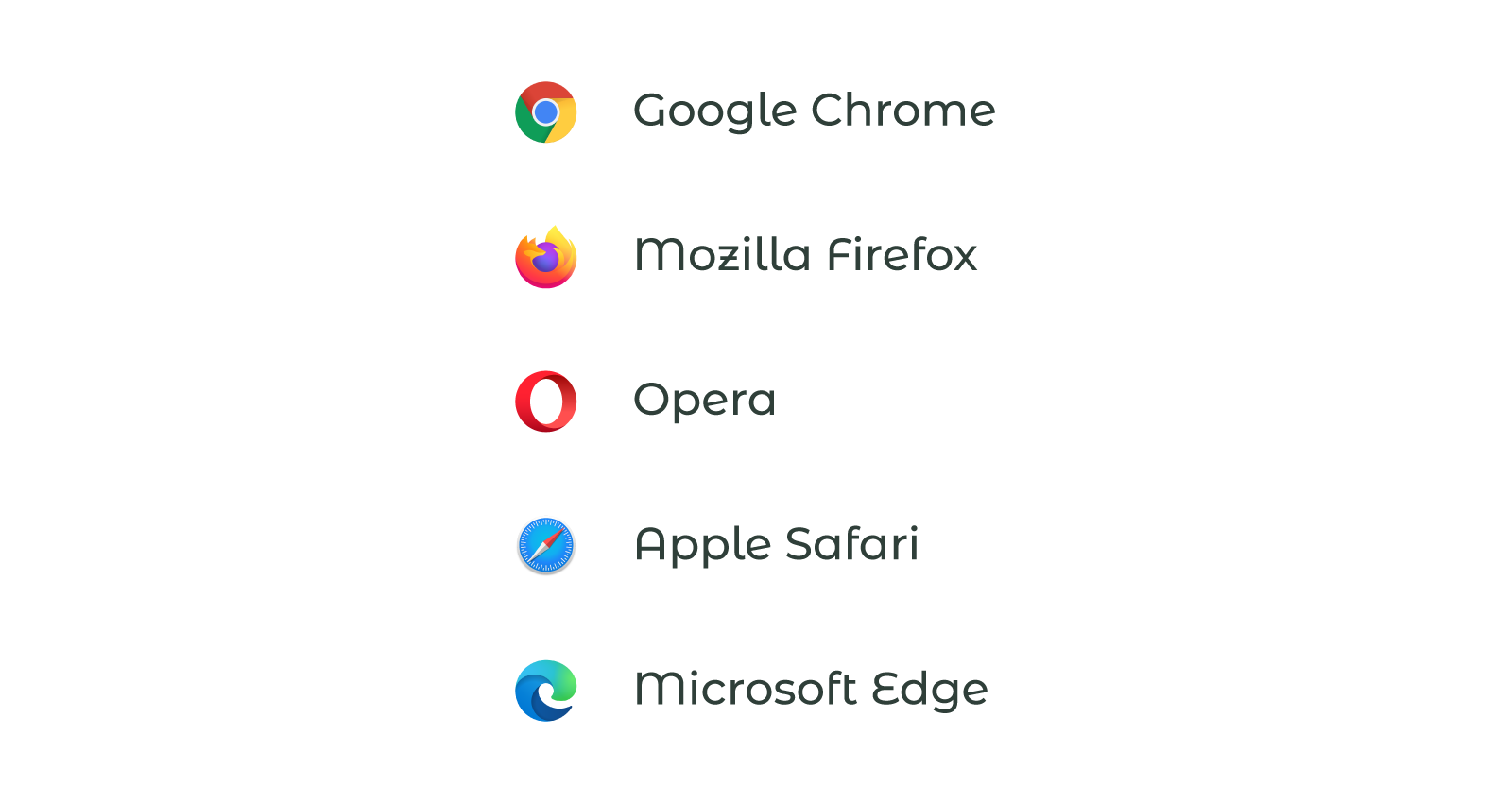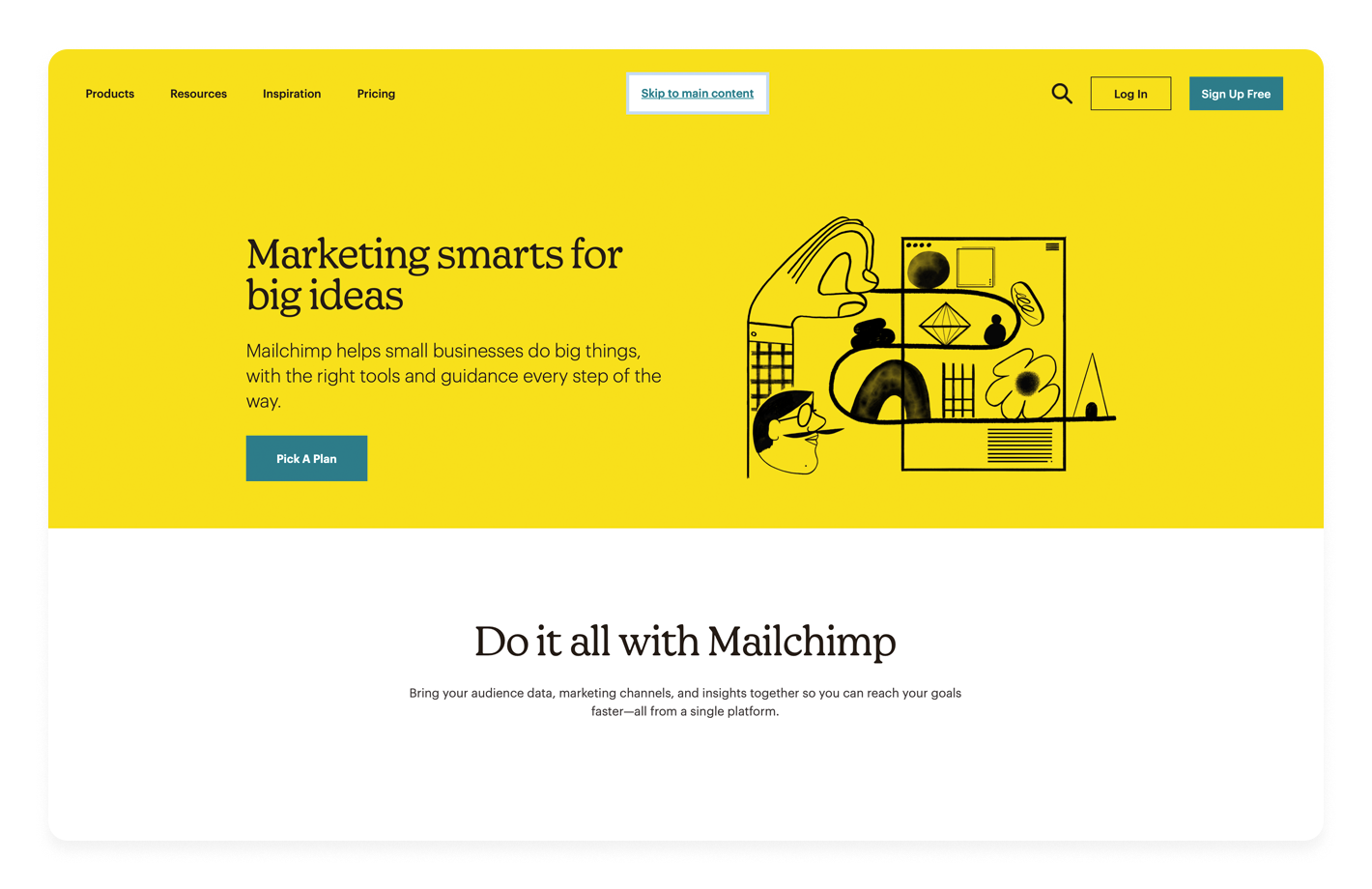- What we do
- Services
- Solutions
- Our Works
- Company
- Contact Us
Each website has two sides. One is the frontend or a user interface that is visible to the audience. The better its design and layout, the more traffic it will attract, the more pleasant digital experiences it delivers, and the more potential leads you will get. The other is the backend, where all the technical and managing processes take place. This is a legit “kitchen” of the website, so to speak. If these processes aren’t smooth, the frontend won’t function as intended.
To successfully combine these two sides, the first CMS-like technologies started to appear in the mid-1990s. Pretty soon, they evolved into complete and functional content management systems, and now these tools are used by the majority of websites.
The number of tools that let you easily manage your website’s content is huge, with some big players on the market, such as WordPress, Shopify, and Contentful. Our team has worked with plenty of them, but we are not going to lie, Contentful became our favorite. It meets almost all business needs and is easy to use for web content management. Let’s discuss it in more detail.
What is Contentful?
Contentful is a cloud-based headless CMS created in Germany in 2013. The platform is designed mostly for helping businesses control their digital presence and create a smooth digital experience for their users. It would be even more correct to call it an omnichannel content platform or a content infrastructure that organizes content and makes it scalable across multiple outlets.
The platform lets you make, distribute, and manage content on any platform. Besides the freedom to choose platforms, Contentful also provides total freedom of building a custom content model so you can decide what content your business needs and quickly manage it.
RESTful APIs help you distribute your content across various channels:
- Websites (plus intuitive web apps)
- Mobile apps (iOS, Android, and Windows Phone)
- Smart devices
With an orderly UI, Contentful is a high-quality tool for creating, managing, and distributing your content online, both on your own or as a team.
How Contentful works
Before Contentful, the only way to manage a cross-channel user experience was to create a content system for each digital channel using a separate CMS. This approach makes updating and fixing websites really tedious and resource-consuming.
Now, Contentful unifies content management and distribution across all possible channels: web, mobile, or even IoT devices like smartwatches or smart TVs—in one editorial interface. Video, music, images, text, or other types of content—anything can be managed by content editors, and delivered as structured content to users.
Contentful has a three-step flow for publishing content in an app or on a website:
- First of all, you specify a content model, which is an essential step to structuring your content properly. Here it is a space with content types that will represent only a particular kind of data. It can be text, images, location, or references. It stays independent from the presentation layer that displays the content. For example, for a content model like “a blog post,” you will need text, a header image, in-line images, referral links, and videos that can all be set up together.
- Secondly, your internal or external editors should add entries and assets. Entries mean the content itself. It could be news, product features, or anything else your business needs to communicate. These entries will be arranged according to the previously created content model. Assets in this case are images, audio, videos, and other files attached to your content model. Content editors can manage all the content in a user-friendly and interactive editing interface.
- Finally, Contentful shows the content in a layout-independent way, so you can create pleasing solutions based on content creation and deliver it to the users as quickly as possible. You need to delegate content display management to developers or have someone to control them and help them out, like designers or editors. With the help of API Keys, you can determine which content will go to which platform. When the delivery is finally set up, the only thing left is to hit ‘Publish’. This tool is completely adapted to your needs.

What makes the difference here is that most CMSs are optimized for working with only one dominant type of content, which most of the time, is a website. These CMSs serve as website builders rather than holistic content management systems. They give you premade content models that limit the potential possibilities of CMS usage and are tied to only one presentation layer. Contentful, on the other hand, offers a headless CMS that works with all types of content and their respective presentation layers, so the number of ways you can distribute the content is truly overwhelming.
How to use Contentful
Building a well-functional Contentful-powered website is easy if you follow the steps listed below. The usual development process with Contentful looks like that:
- Create a Contentful account—It’s easy. Just sign up if you don’t have an account, or log in if you already do.
- Create a new space, or “data bucket." It’s your place for content storage where all the content related to a project is kept safely.
- Create a new content space. At this step, you add various types of content that will be saved in your space: text, images, SEO metadata, videos, and so on.
- Customize it to your needs. Here you structure all the content types in the order they should appear on the website.
- Import data into the data bucket. Fill out the content model with the content you need.
- Test it. Contentful lets you run the website locally to make sure everything runs smoothly.
- Deploy it. Contentful doesn’t limit the choice of deployment platforms: you can deploy your website with Heroku, Dokku, Surge, and GitHub.
Who can use Contentful?
Contentful can be used by a variety of business industries for their websites, including:
- E-commerce platforms
- Healthcare
- Financial Services
- Media and Entertainment
- Travel and Hospitality
- Education
- Non-profit
- Government
- and many more.
Contentful is a flexible content management system that can be customized to fit the needs of any industry. It allows for easy management of website content, including text, images, videos, and more. Additionally, its API-based architecture allows for easy integration with other systems and multiple platforms, making it a versatile solution for any business.
Contentful CMS: top features
Here are some features that make Contentful so special:
- Content distribution infrastructure: Contentful provides its content delivery network (CDN) with the main purpose of delivering content to users around the clock.
- Managing content models: You can create and customize each content model according to your primary business needs. Note: there are no premade content models, so you should define the one that will be most suitable for your needs.
- Uncluttered UI: Contentful offers a simple and thoroughly tested user interface that is intuitive for everyone, even those with no software development background. This is a priceless feature for providing great digital experiences for clients.
- Omnichannel content distribution: The Contentful API lets you deliver your content across multiple platforms in literally one click. Mobile, web, or any other platform you can imagine will receive all types of content as soon as you publish it. Yes, with headless CMS you don’t have to go all over again to manage content on different platforms and devices.
- Backup: All the data from your website or app is backed up on two separate servers and, if deleted, has a 25-day window for recovery, so there’s no worry about any accidental data loss.
- Codeless content management: Contentful’s UI allows even people with no technical background to seamlessly operate the platform. Because you do not have to code to use Contentful, you can add and edit content types as well as manage the content within the platform itself.
It's important to remember that Contentful helps you manage the content, but it can’t be used to create a website or an app. This will require actual programming.
After creating a digital experience with the tools suitable for your business needs, your content will be displayed on all of the platforms, so you only need to create and manage it once.
Yellow can build a Contentful-integrated solution for you. We're eager to hear about your goals.
Get in touchContentful accommodates the latest versions of leading desktop browsers:

The older versions of those browsers are also compatible with Contentful, but they may hamper its overall functionality. Contentful doesn’t support mobile browsers.
Contentful's pros and cons
Why do businesses use and like Contentful? Well, here are the reasons:
- Rapid implementation: Thanks to Contentful being an independent SaaS platform with customizable content models, you can start editing, delivering, and distributing your content literally in minutes. Easy configuration and a user-friendly infrastructure give Contentful an advantage over the traditional CMS.
- Security: By default, the content you implement in Contentful is encrypted. Your drafts and finished content models are secured, so content teams shouldn’t worry about leaks or service disruptions. Your audience will see only the content when you publish it.
- A channel-agnostic system: You can create and publish content on all possible channels with a built-in editor and an integrated media library to update source files without crushing any public links. Moreover, Contentful is optimized for mobile with synchronization, image compression, and support for offline persistence.
- Huge caching and redundancy: Contentful is known for quick content delivery and high-level security for critical data: Even if all of the redundancies were to fail, all or most of your content would still be available from the cache.
- GraphQL API: GraphQL is a query language and server-side runtime, and its purpose is to give users exactly the data they want. In Contentful, such an API defines the exact server responses and collects content from multiple sources. So, it uses fewer API calls without overloading the back-end system.
Contentful is fast, reliable, and engaging, so it needs minimal manager intervention. In our opinion, Contentful seems to be the most efficient and productive way of publishing content properly, especially across several channels. You'll have the freedom to publish and distribute your content to a variety of platforms along with the ability to change their structure and design whenever you want to. Look how we used this content management system to create a pharmacy website and a blog for tax professionals.
Developers prefer Contentful for several reasons:
- Easy learning: The process of setting up Contentful and putting it into action doesn’t require highly specialized knowledge or skills. It makes learning the algorithms of the platform fast and easy.
- RESTful API: The stateless API with compact JSON payloads gives full programmatic control over the CMS.
- A microservices architecture: It’s easy to manage your structured content with fully decoupled write and read APIs. Contentful provides a fault-tolerant content platform that evolves with your business needs and new apps.
- Extendable interface: The Contentful team enables additional UI extensions and other projects to facilitate working with the platform. Even if some feature is not built yet, it’s clear how to implement it with the existing tools.
- Speed optimization: AAdvanced caching techniques are tightly integrated with external CDNs to deliver API payloads in the sub-100-millisecond range.
- Language- and framework-agnostic: While most traditional CMSs can impose restrictions on using different languages and make you build your app with a particular app framework, Contentful supports SDKs for the most popular languages. Additionally, this headless CMS accommodates open-source components for apps, design systems, and web editor interfaces.
- Development support: The Contentful team builds empathetic, trust-based relationships with the community, encouraging collaboration among developers. All Contentful improvements are based on feedback and real-world project experience.
Consider the following points before you use Contentful for a website:
- Dependance on developers: Contentful-based applications still need a certain programming language or app framework to work with. So if you have neither a development team nor an external partner, traditional CMSs may be a better choice for you.
- No channel-specific support: The developer will be responsible for some elements of navigation.
- Different content organization: Creators must adapt to the new organization of content because sitemaps aren't provided with Contentful.
- Development costs: Front-end development will take additional time and money because CMS is headless and therefore isn't an end-to-end solution.
Successes in the use of Contentful
Content teams of many popular web services and brands rely on Contentful CMS for content management.
Chanel, one of the world's most renowned fashion brands, used Contentful as a pop-up solution to present its newest collection to clients in Asia. Visitors to the site can download an app that recommendation particular lipstick shades based on their personality traits.
The popular list-based customer-contact service Mailchimp used this CMS to remove publishing bottlenecks, replace its hard-coded marketing website with something that could be updated by people with no technical knowledge, and eliminate the manual work that had become a hindrance to the company's marketing website.

LightBlik, a top European green-energy project, wanted to make its website a leading content-distribution digital channel with a focus on mobile platforms. The CMS should also be scalable enough to handle the company’s growing digital presence. Additionally, they wanted to provide their non-technical specialists with the ability to create and manage content without the help of developers. Thanks to Contentful, they managed to cover all their needs and achieve high results.
Atlassian, an Australian enterprise software company, wanted to structure content into modular and reusable chunks, provide users with proper customer service and streamline localization. With the help of Contentful, they organized omnichannel publishing that allows content sharing across their products and the support portal. They were also able to cut the development time needed to implement changes to landing pages from two weeks to just five minutes for a non-tech editor.

Contentful has benefited many other brands too, such as:
- Spotify audio streaming service
- Shutterstock photo library
- Figma graphic design platform
- Coursera online learning platform
- Mozilla web browser
- Leroy Merlin, a leading French DIY retailer
Final words
As you can see, Contentful lends itself to a very wide range of applications. It's the CMS that lets you build a user-friendly, high-quality experience while being easy for a non-technical editor to use. Because Contentful is platform-agnostic and omnichannel, it has the tools needed to satisfy every content-management need. Based on our experience with Contentful, we can say it’s one of the best, most efficient ways to ensure that your content hits the target. And if you want to dive deeper into Contentful, here is another article where we explain why this headless CMS is cool for content management.
Let Yellow show you what Contentful can do.
Learn moreGot a project in mind?
Fill in this form or send us an e-mail
✍️ What is Contentful?
✍️ Can Contentful be integrated with other systems?
✍️ How does Contentful save on development and maintenance costs?
✍️ Is Contentful suitable for businesses of all sizes?
Subscribe to new posts.
Get weekly updates on the newest design stories, case studies and tips right in your mailbox.
